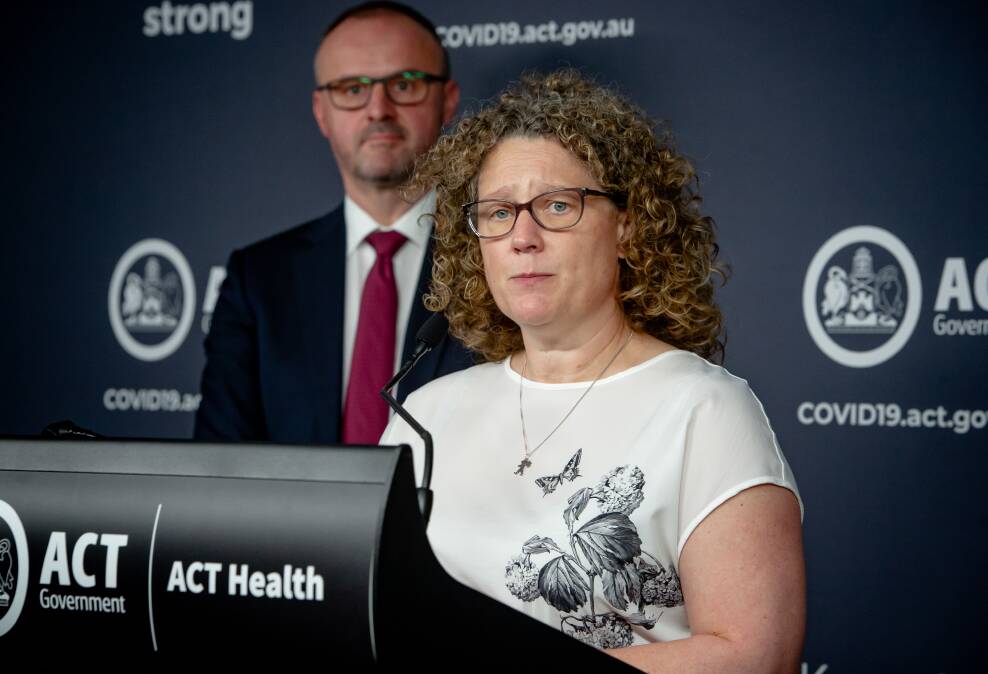
The Delta variant of COVID-19 was introduced to Canberra at least 13 separate times following the first outbreak last year, but two incursions among disadvantaged and ethnically diverse groups led to most of the community cases in that period, a preliminary study has found.
The study found a strict lockdown, high levels of genomic sequencing and culturally appropriate health interventions successfully controlled the spread of the virus while COVID-19 vaccinations were rolled out across the community.
The first COVID-19 incursion, which was detected on August 12, 2021 and prompted a city-wide lockdown, was responsible for 35 per cent of cases sequenced in the territory to November 11, 2021.
The study found that virus type - dubbed ACT.19 and associated with 478 cases - spread among an ethnically diverse community with larger households.
The second COVID-19 incursion, detected on August 19, was linked to 724 cases in Canberra, or 53 per cent of cases in the study period, and was spread among more disadvantaged Canberrans. It was dubbed ACT.20.
While the first cases of ACT.20 were detected three days after ACT.19, it did not increase exponentially until early September, which the study said meant it was possible, though unlikely, there was undetected transmission or more likely a separate incursion of a genetically identical virus.
"At a local level, the use of genomic epidemiology to differentiate between the two overlapping incursions led to a greater understanding of transmission in at-risk populations and the need for enhanced mitigation measures in these settings, such as culturally appropriate engagement and the development of in-reach interventions in association with non-government organisations," the study said.
The study - with contributions from ACT Chief Health Officer Dr Kerryn Coleman and Deputy Chief Health Officer Dr Vanessa Johnston - has not yet been peer-reviewed but was made publicly available last week.
Two significant later COVID-19 incursions during the lockdown period were associated with fewer cases, but spread predominantly among cohorts who were not yet eligible to be vaccinated for the virus.
One COVID-19 incursion was associated with a party in Wanniassa that broke public health rules and the other to an outbreak at Wanniassa School.
"The cohorting strategy applied in the school setting as students returned to on-campus learning, in addition other COVID-safe measures such as masking, was very effective in limiting the extent of community transmission associated with this incursion," the study said.
The study argued high levels of genomic sequencing helped public health authorities identify transmission and target efforts to limit the spread of the virus.
"We show that the Delta outbreak was driven by several independent incursions, with successive waves impacting different vulnerable groups," the study said.
"However, by deploying enhanced interventions (such as culturally appropriate engagement and partnered in-reach interventions) into these at-risk communities, timely public health measures were successful in mitigating these incursions and most importantly, in preventing severe clinical outcomes."
Genomic sequencing revealed links contact tracers would have otherwise missed, including transmission between two high school communities at a shared extra-curricular activity.
"Incorporating this genomic contact tracing, we were able to identify transmission at certain exposure sites and implement enhanced infection control measures in these settings," the study said.
"For example, genomic information showed that a case cluster at a social housing complex was the result of several incursions over a three-week period, rather than a single superspreading event which was assumed based only on case interviews and contact tracing information."
The study period began when the lockdown commenced on August 12, 2021 and continued to November 11, 2021, a day before most of the remaining restrictions were eased in the ACT.
The Omicron subvariant of COVID-19, which led to a new peak of infections in January, was first detected in Canberra on December 3, 2021.
The study was published on Authorea, a database of pre-print scientific research, which can rely on preliminary information and be subject to changes and revision.
We've made it a whole lot easier for you to have your say. Our new comment platform requires only one log-in to access articles and to join the discussion on The Canberra Times website. Find out how to register so you can enjoy civil, friendly and engaging discussions. See our moderation policy here.







